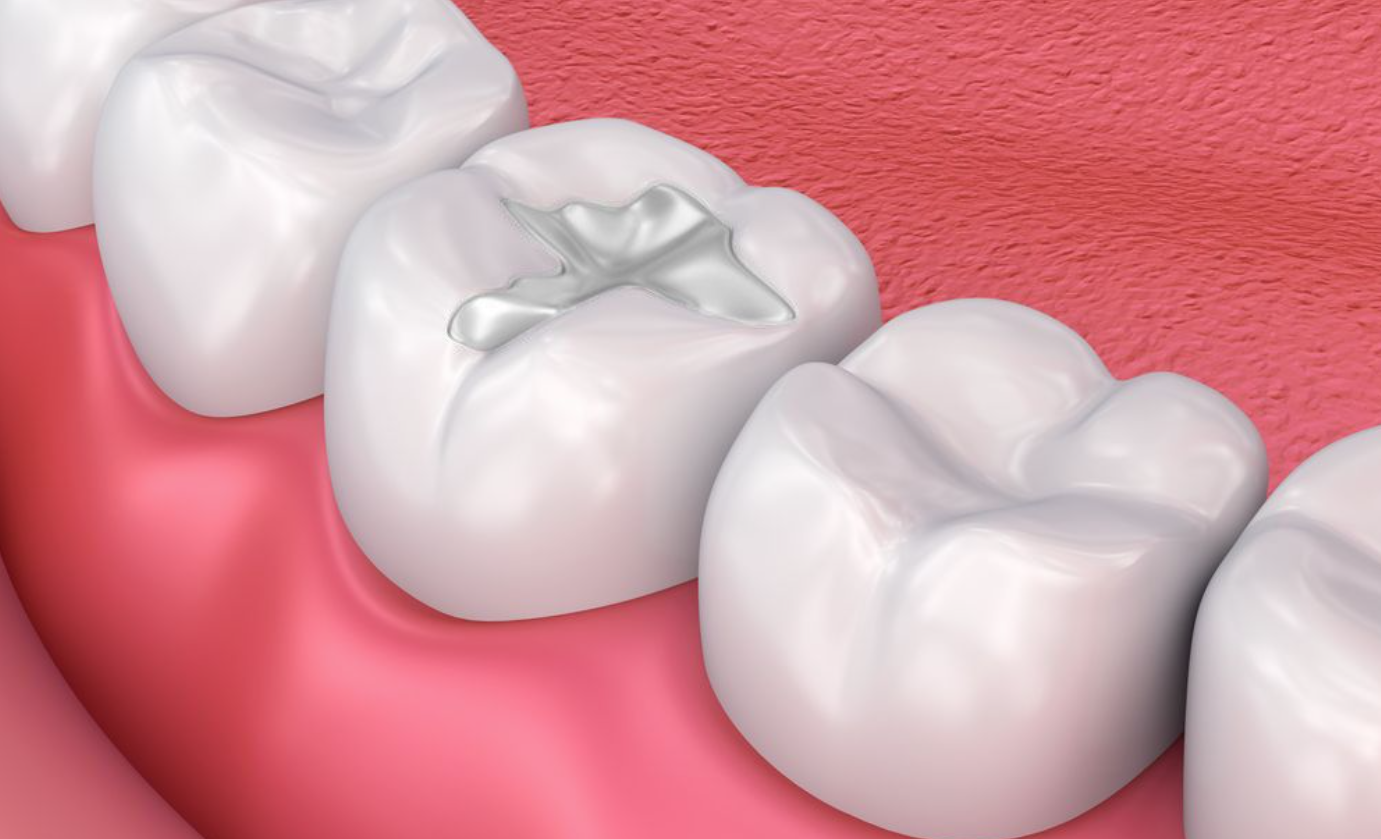How long does a dental filling last?
A dental filling can last up to 10 to 15 years, depending on various factors such as the material used, the location of the filling, and oral hygiene practices. However, fillings can wear down over time, chip, crack or even fall out, requiring replacement.
Leaking fillings can also lead to bacterial and food debris entering the area beneath the filling. While some materials like gold and amalgam tend to last longer, it’s important to note that no filling is permanent. Regular dental check-ups and maintaining good oral hygiene can help prolong the lifespan of a dental filling.
Introduction to Dental Fillings
Dental fillings play a crucial role in maintaining oral health. They are used to repair teeth that have been damaged by decay or cavities. Fillings help restore the tooth’s structure and prevent further decay or infection.
Contrary to common misconceptions, fillings are not permanent and may need to be replaced over time. The longevity of a filling depends on various factors, such as the material used, the location of the filling, and the individual’s oral hygiene habits.
While gold and amalgam fillings last longer, composite resin fillings have a lifespan of about a decade with proper care. It’s important to regularly visit the dentist for check-ups to assess the condition of fillings and determine if any replacements are necessary.
Remember, maintaining good oral hygiene practices is key to prolonging the lifespan of dental fillings.
Types Of Dental Fillings
Dental fillings can last for many years, typically up to 10-15 years with proper care. However, factors such as the type of filling material used, oral hygiene, and the location of the filling can affect its longevity. Regular dental check-ups can help determine when a filling needs to be replaced.
With dental fillings, there are several options to choose from, including amalgam, composite, gold, and ceramic.
Amalgam fillings are made from a mixture of metals and have been used for many years. They are known for their durability and are often used in back teeth.
Composite fillings are made from a mixture of plastic and glass materials. They are tooth-colored and blend in with the natural teeth, making them a popular choice for visible areas.
Gold fillings are made from gold alloy and are known for their longevity. They are often used for larger restorations and can last for many years.
Ceramic fillings are made from porcelain and are also tooth-colored. They are a good option for those with metal allergies.
Factors influencing the choice of filling material: The choice of filling material depends on various factors, including the location and size of the cavity, the patient’s aesthetic preferences, and the cost of the material. It is important to consult with a dentist to determine the most suitable filling material for each individual case.
Expected Lifespan of Different Fillings
With dental fillings, the expected lifespan varies depending on the type. Amalgam fillings are known for their durability and can last up to 15 years or more with proper care. On the other hand, composite fillings are a popular choice for their aesthetic appeal and functional benefits.
They typically last between 5 to 7 years, but with good oral hygiene and regular dental check-ups, their lifespan can be extended. It’s important to note that the longevity of a filling also depends on factors such as the location of the filling, the amount of pressure it’s subjected to, and the individual’s oral hygiene habits.
By maintaining good oral health practices and attending regular dental appointments, individuals can prolong the lifespan of their fillings.
Factors Affecting Filling Longevity
Various factors can impact the longevity of dental fillings. One crucial factor is oral hygiene. Poor oral hygiene can lead to decay and gum disease, which can weaken the filling’s structure and cause it to fail. Dietary habits can also influence filling longevity.
A diet high in sugary or acidic foods can erode the filling material, causing it to wear down faster. Regular dental check-ups are essential as they allow the dentist to detect any issues with the filling and address them before they worsen.
While most fillings can last up to twenty years, their lifespan depends on the material used and the patient’s oral hygiene and dietary habits.
Signs of Filling Failure
|
With dental fillings, it is important to understand that they do not last forever. Over time, fillings can wear down, crack, or even fall out, which can lead to dental issues such as cavities or tooth decay. Identifying wear and tear on your fillings is crucial to maintaining good oral health.
Symptoms of a leaking filling, such as sensitivity or pain, should also be addressed promptly to prevent further damage. It is recommended to visit your dentist regularly to monitor the condition of your fillings and address any potential issues before they become more serious.
Maintenance Tips for Prolonging a Filling’s Life
To prolong the life of dental fillings, follow these maintenance tips. Practice good oral hygiene, avoid chewing on hard objects, limit consumption of acidic foods and drinks, and visit your dentist regularly for check-ups and professional cleanings. These habits can help extend the lifespan of your dental fillings and prevent the need for frequent replacements.
| Best practices in oral care |
| Proper oral hygiene is key to maintaining the life of your dental fillings. Brushing twice a day, flossing daily, and using an antiseptic mouthwash can help prevent decay and prolong the life of your fillings.
Avoiding sugary and acidic foods can also reduce the risk of decay and prevent fillings from breaking down over time. Lifestyle changes, such as quitting smoking and reducing alcohol consumption, can improve oral health and protect your fillings. Regular dental check-ups and cleanings can detect any potential issues with your fillings and allow for prompt treatment before they worsen. |
The Process of Replacing Fillings
| It’s important to know when to consider replacement and what to expect during the procedure. Fillings can last anywhere from 5 to 15 years, depending on the type of filling and how well you take care of your teeth.
If you experience any pain or sensitivity around a filling, it may be time to consider replacement. If you notice any chipping, cracking, or discoloration of the filling, it’s best to have it checked by your dentist. During the procedure, your dentist will remove the old filling and replace it with a new one. Depending on the size and location of the filling, you may need local anesthesia to numb the area. The new filling will be shaped and polished to match your natural teeth. |
Advancements in Filling Technology
Innovations in materials have led to significant improvements in the durability and longevity of dental fillings. The future of dental restorations looks promising as new materials and techniques continue to emerge.
Dental composite resins, for example, offer excellent durability and a natural appearance, making them a popular choice for modern fillings. These materials are insoluble, resistant to dehydration, and cost-effective, making them an attractive option for both patients and dentists.
While traditional amalgam and gold fillings are known for their longevity, composite resins are proving to be a viable alternative with their impressive lifespan. With ongoing advancements, dental fillings are expected to last even longer, providing patients with lasting and reliable solutions for tooth restoration.
Frequently Asked Questions
How often do fillings need to be replaced?
Dental fillings typically last up to 15 years, but factors like material and oral care can impact longevity. Regular dental check-ups can help determine if a filling needs replacement.
How long does a tooth with a filling last?
Dental fillings can last up to 20 years, but factors like material and oral care affect longevity.
Do fillings wear down over time?
Fillings can wear down over time, chip, crack, or even fall out, requiring replacement. They can also leak, allowing bacteria and food particles to enter the area beneath the filling. While some filling materials are strong and durable, none are considered permanent.
The longevity of a filling depends on factors such as the material used and proper oral care. Gold and amalgam fillings often last the longest.
Are dental fillings permanent?
Dental fillings are not permanent. Although some materials are strong, none are considered permanent. The longevity of a filling depends on the material used. Gold and amalgam fillings tend to last the longest. However, fillings can wear down, chip, crack, or even fall out over time, requiring replacement.
Conclusion
The lifespan of a dental filling varies based on factors like the material used, oral hygiene, and chewing habits. While some fillings may last up to 20 years, regular dental check-ups are essential to monitor their condition and potential replacement.
Maintaining good oral care can help extend the longevity of dental fillings.




